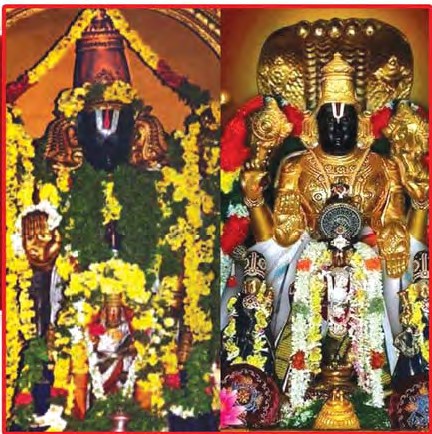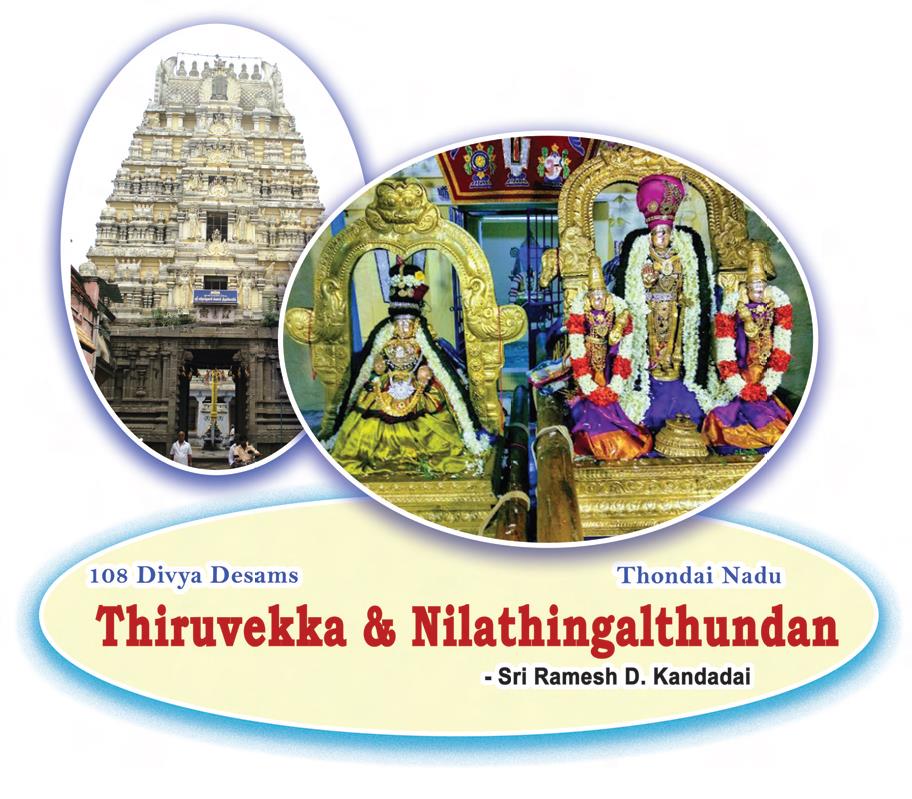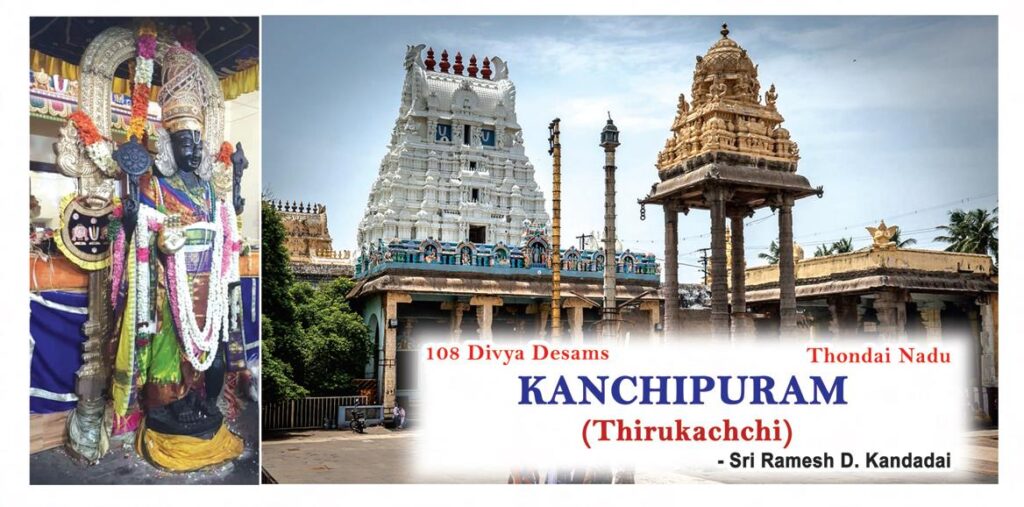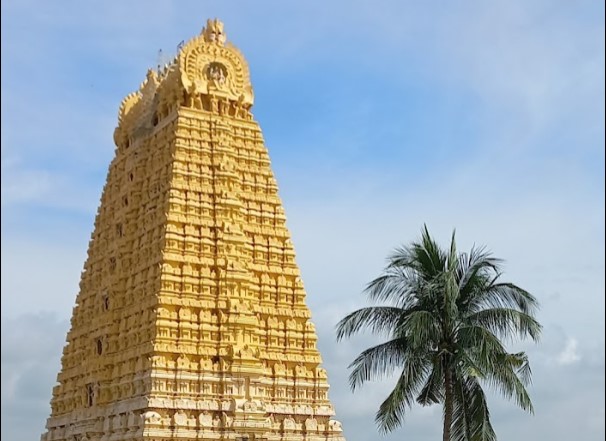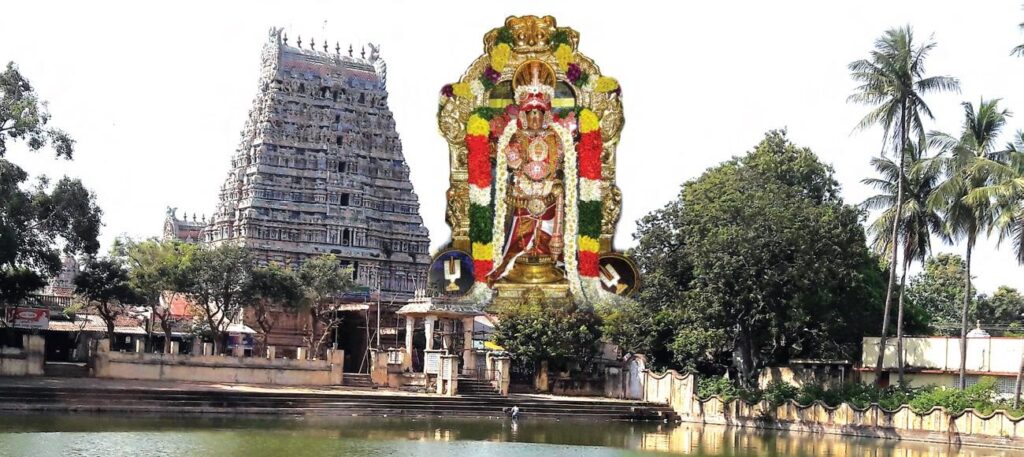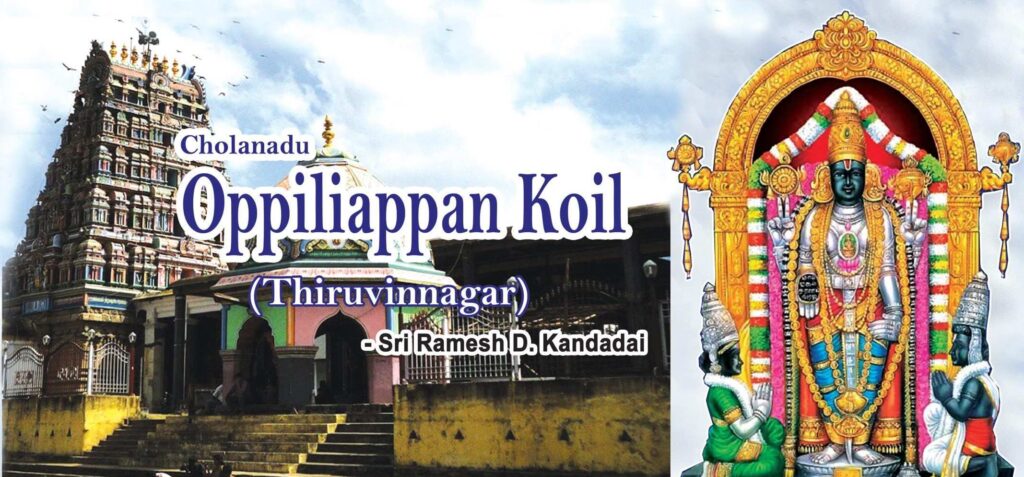Trivikrama Perumal Temple Location As can be seen from the map, Trivikrama Perumal Temple is located in a cluster of about 160km due east of Srirangam along the Bay of Bengal coast not far from Chidambaram. Click here for the Google Maps location Sirkali / Seerkazhi Sthalapuranam This place is also known as Kazhiseerama Vinnagarm. Read More
Tag: Divya Desams
A Divya Desam or Vaishnava Divya Desam is one of the 108 Vishnu and Lakshmi temples that is mentioned in the works of the Alvars, there are a total of 108 Divya Desams.
Parimala Ranganathan, Thiruindalur (108 Divya Desams)
Parimala Ranganathan Temple Location As can be seen from the map, Parimala Ranganathan Temple is located in a cluster of about 160km due east of Srirangam along the Bay of Bengal coast not far from Chidambaram. Click here for the Google Maps location Thiruindalur Sthalapuranam Chandra (moon) one of the Navagrahas was cursed. He was Read More
Tirukalvanur & Tirupavalavannar (108 Divya Desams)
Tirukalvanur & Tirupavalavannar – Location These two shrines are located in and around the Kamakshi Amman Temple in Kanchipuram. In particular, the Divya Desam of Tirukalvanur is located very close to the main sanctum of the Kamakshi Amman Temple. Tirukalvanur Sthalapuranam The word Kalvanur originates from the Lord’s name of ‘Kalva’ which means a lovable Read More
Nilathingal Thundan Temple (108 Divya Desams)
Nilathingal Thundan Temple – Location It is just off the Chennai- Bengaluru national highway, about a 2-hour drive due west and a little south of Chennai. Rail and bus connectivity is plenty. The nearest airport is Chennai. Click here for Google Maps Location Nilathingalthundan – Sthalapuranam There was an ancient mango tree at Sri Ekambaranathar Read More
Sri Sonna Vannam Seidha Perumal Temple, Thiruvekka (108 Divya Desams)
Sri Sonna Vannam Seidha Perumal Temple – Location About a 2-hour drive due west and a little south of Chennai, it is located just off the Chennai–Bengaluru national highway. Rail and bus connectivity is plenty. The nearest airport is Chennai. Click here for Google Maps location Sri Sonna Vannam Seidha Perumal Temple – Sthalapuranam When Read More
Sri Varadharaja Perumal Temple – Kanchipuram (108 Divya Desams)
Kanchipuram – Location The famous town of Kanchipuram or Kanchi or Thirukachchi is located 75km due west and a little south of the capital city of Chennai in the south Indian state of Tamil Nadu. Since the Chennai Bengaluru highway goes right by the town, connectivity is no problem. Kanchipuram – Google Maps Location There Read More
Sri Ulagalantha Perumal Temple, Thirukoilure (108 Divya Desams)
Sri Ulagalantha Perumal Temple Thirukoilure Location Tirukoilur also spelt as Tirukkoyilur or Tirukovilur is a city and the headquarters of Tirukoilur taluk in Kallakurichi District, Tamil Nadu, India. Thirukovilur is located 34km towards the west of the district headquarters Villupuram in Tamilnadu. It is on the Panruti-Vellore route. It is a small town with a Read More
Sri Bhaktavatsala Perumal Temple (Thirukkannamangai) – 108 Divya Desams
Sri Bhaktavatsala Perumal Temple (Thirukkannamangai) Thirucherai and Thirukkannamangai divya desams are approximately 110 km east of Srirangam and just south and southeast of the temple town of Kumbakonam. Both are located in small villages about 20km apart. Location Another 20km south and east of Thirucherai is the small village of Thirukkannamangai. Sri Bhaktavatsala Perumal Temple Read More
Sri Saranatha Perumal Temple (Thirucherai) – 108 Divya Desams
Sri Saranatha Perumal Temple (Thirucherai) Thirucherai and Thirukkannamangai divya desams are approximately 110 km east of Srirangam and just south and southeast of the temple town of Kumbakonam. Both are located in small villages about 20km apart. Location This village is located just north of Kudamuruti river just south of Kumbakonam and Natchiyarkoil. Sri Saranatha Read More
Sri Oppiliappan Temple – Thirunageswaram (Thiruvinnagar) – 108 Divya Desams
Sri Oppiliappan Temple – Thirunageswaram (Thiruvinnagar) Thiruvinnagar, more popularly known as Oppiliappan Koil is an unusual temple. On the southern bank of the Kaveri River, it is also very well connected by all forms of road transport. This was constructed during the mid chola period in the 8th century with additions by Nayaks later. The Read More
